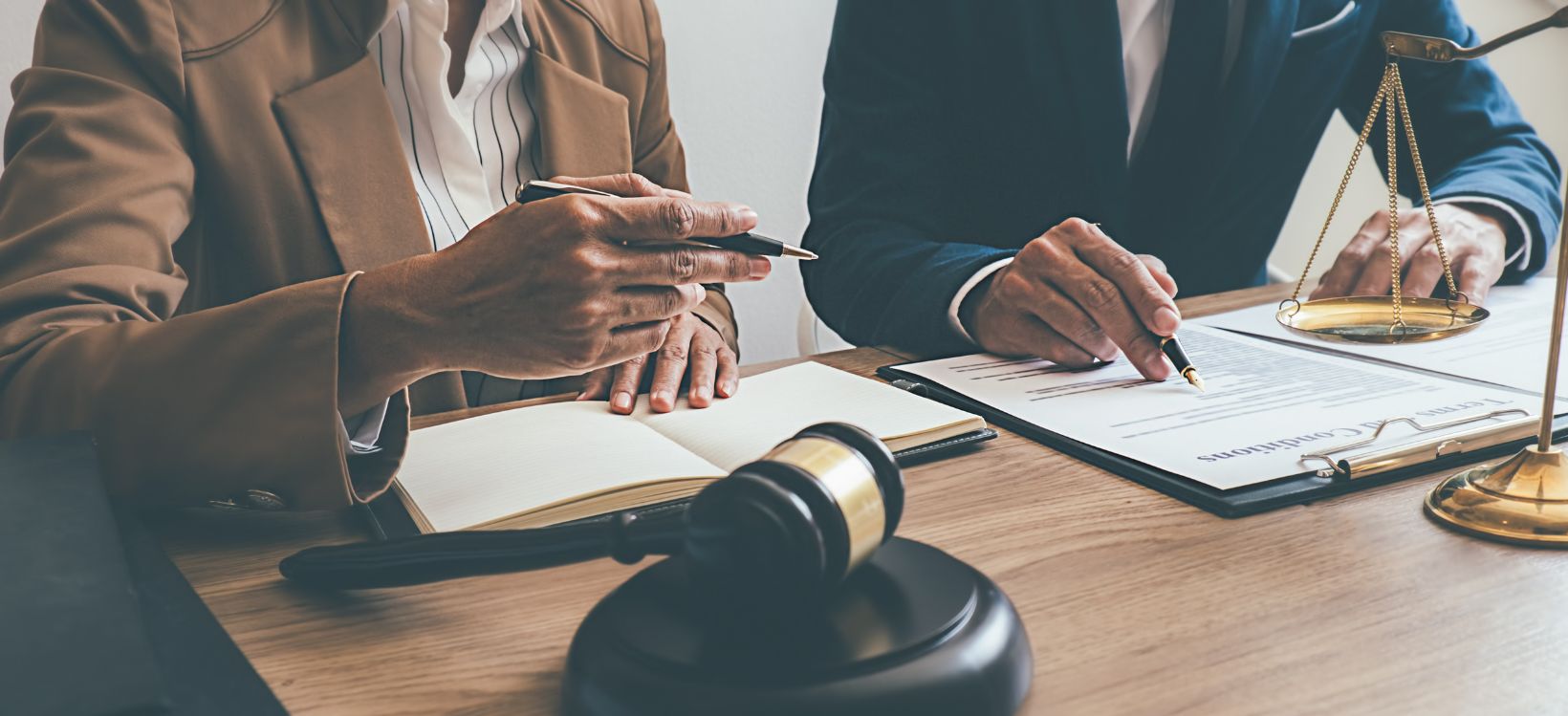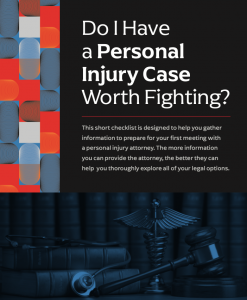Do I Have a Personal Injury Case or Not?
Breit Biniazan—July 26, 2022

After an accident, pursuing a personal injury lawsuit may be the last thing on your mind. Your focus should be on yourself and your recovery post-accident, including finding the right medical team and treatment options. However, you’re likely busy dealing with calls from your insurance company and juggling missed time at work.
If your injury was caused by someone else’s negligence, you may have a personal injury case that you can pursue to help with the financial and emotional damages as a result of the injury. And when it comes to a personal injury lawsuit, time is of the essence. It’s crucial to contact an attorney as quickly as possible to help you make the decision of whether you have a potential case.
The information below can be used as a guide to give you a better idea of whether you have a viable personal injury claim and what steps you’ll need to take to pursue a case.
The Three Essential Elements of a Personal Injury Claim
To win a personal injury claim, you’ll need to prove three things:
- The defendant owed you a duty of care
- The defendant breached this duty
- This breach caused your injury or financial damages
Duty
In many cases, the duty element is the simplest to prove.
Every individual owes a duty to all others to avoid injuring them (or damaging their property).
For example, property owners owe a duty to those who enter their property (known as “invitees”) to maintain their premises in a reasonably safe condition.
Breach
A breach occurs when an individual doesn’t take reasonable care to avoid injuring someone else. Or, it occurs when a property owner fails to ensure that their property is safe for invitees.
Some examples include:
- Failing to abide by traffic laws, causing a car accident
- Failing to make repairs to a walkway, causing guests to trip
- Failing to quickly respond to and correct a public safety hazard after it’s been reported
The next step is to connect the defendant’s breach with the damages you’ve suffered.
Damages
The third crucial element of a personal injury claim is damages—the financial measure of the harm you’ve suffered.
Damages can include medical expenses, lost wages, lost earning potential, property damage (like damage to your home, vehicle, or electronics), and other costs associated with your injury.
Complete the form below to download our PDF and help you prepare for your first meeting with a personal injury attorney.

What Evidence Can Support a Personal Injury Claim?
Every personal injury claim is different. However, there are a few common categories of evidence that can support an injury claim.
While you don’t need all these types of evidence, you will need enough evidence to prove each of these three essential elements: duty, breach, and damages.
Physical Evidence
Physical evidence is evidence that you can see or touch. It may include:
- The clothing or shoes you were wearing during the accident
- Photos of any injuries you’ve suffered
- Photos of property damage
- Medical images
Photos and videos taken immediately after the accident can be a good way to show what happened, as well as any aftermath.
Testimonial Evidence
Another important category of evidence is testimonial evidence—statements. Testimonial evidence often isn’t gathered until after a lawsuit is well underway.
Some examples of testimonial evidence include:
- Written witness statements
- Witness deposition testimony
- Expert witness testimony
- Police reports
- Affidavits
Having sworn statements that support your claims can boost your odds of success.
Documentary Evidence
The third type of evidence is documentary evidence—documents and other written material.
Documentary evidence is often used to corroborate damages. It can include:
- Medical bills
- Bank statements
- Cell phone records
Calculating Your Damages
Knowing what evidence may be out there can make it easier to calculate your damages and value your claim. Some of the expenses you may be able to recover include:
- Medical expenses
- Lost income
- Loss of future earning potential
- Property damage or replacement cost
- Expenses incurred in adapting your home or vehicle as a result of your injuries
- Cost of replacement services (e.g. housecleaner, lawn services)
If the injured person is married, their spouse may also have a claim for loss of consortium.
What Should You Bring to Your Attorney First Meeting?
You may be nervous before meeting with a personal injury attorney for the first time, especially if you haven’t yet gathered any of the evidence described above. But don’t worry—this meeting is about exploring the strength of your claim and evaluating your legal options.
Before you go to your first meeting with your injury attorney, gather any relevant documents:
- Pay stubs or W-2s for calculating your lost wages
- Medical records and medical bills
- Names and contact info for anyone who witnessed the accident or has relevant information
- Any photos or videos you have of the scene of the accident
- A police accident report, if available
- Any letters or other communication from an insurance company or attorney
Although your attorney may not have time to read all these documents in detail during your first appointment, having them available will allow the team to learn more about your case.. In addition, it will help your attorney figure out what evidence they’ll need to gather to build your claim.
In Summary
Taking action quickly after an injury can help you recover the compensation you deserve. Don’t delay in seeking help—a personal injury attorney can fight for your legal rights if you’ve been injured by someone else’s negligence.
Not sure if you have a personal injury case? Contact our lawyers today for a free consultation. Schedule your consultation online or call 855-212-8200.

By Courtney Sweasy
Marketing Director

Categories:
Office Locations
Related Posts
Categories
We are personal injury attorneys
Fill out our contact form to speak to our experienced Virginia trial attorneys. Breit Biniazan has helped recover millions of dollars in cases. Learn how we can help you today.